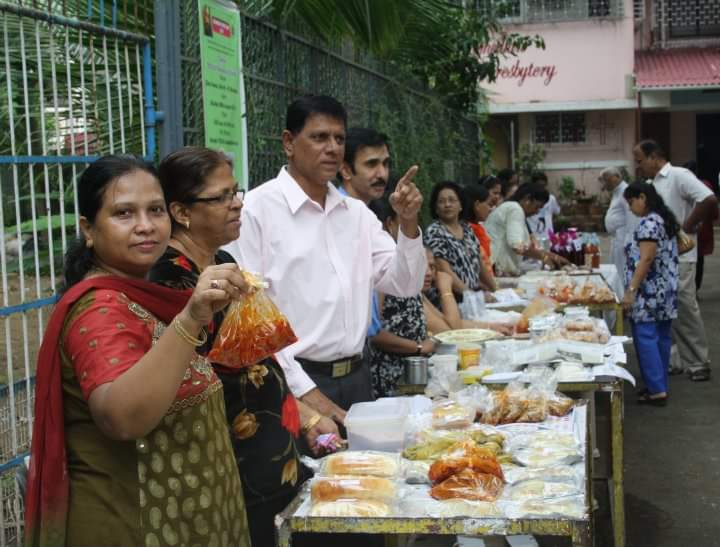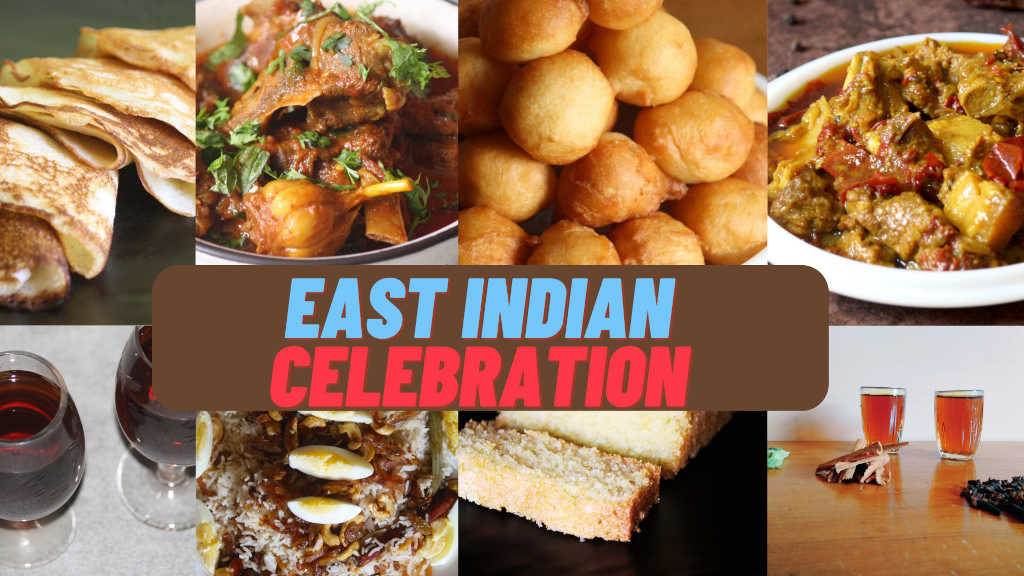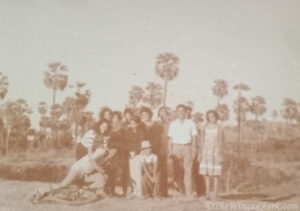A culture that doesn’t feast, doesn’t live. And as a culture that’s still around, the East Indians of Mumbai celebrate a number of feasts, some in the old way, some not. I’m not really observant of these traditions, so I have to go ask the oldies for info. Here’s a short summary of how Bombay’s East Indians celebrate a few feasts, as told by my parents and other senior East Indian relatives from Poinsur village.
PS. Focussing on food, since you know, we have all the recipes over on my other site AbbysPlate.
Christmas (Natal-cha San)
For Christmas, some of the oldies from yesteryear would fast and abstain from alcohol and rich foods during Advent. Coming up on Christmas, families would start making cakes and sweets, a whole lot of them. You’ll find a lot of these recipes in my East Indian Christmas Book and also in the other recipe books from the series. Hop over to Abby’s Plate to find out more.
Sweets are distributed among relatives on Christmas Eve. Most families then attend Midnight mass and then attend get-togethers with friends and relatives. And almost everyone goes to some cousins’ or relatives’ house for lunch on Christmas Day.
Christmas Lunch is a feast involving cake, wine, pattice, wafers, pigling roast, mutton khudi, vindaloo, sarpatel, foogias, and a lot more.
That evening, some groups would organize events in the church compounds – carol singing competitions, Santa Claus giving gifts to little ones, housie and whist drive competitions, and more. Some attend dances locally or at the Catholic Gymkhanas. In my parent’s time, families would go to Kashimira (St. Jerome Church in Mira-Bhayander) on Boxing Day (26 Dec) and have a picnic there with the Christmas leftovers.

Pic by Aunt Trilby
Pancake Tuesday, Ash Wednesday, and Good Friday
Shrove Tuesday or Mardi Gras involved getting rid of all the butter, fat, and sweets from the house by making elijao or pancakes.
The palms that had been collected the previous year were burnt and used to make ash. This ash was applied to the foreheads at the Ash Wednesday mass as a sign of our human mortality and the need for penitence. It also marked the beginning of Lent and the start of fasting and penitence.
Good Friday services involved more fasting and watching the Passo Service after the mass.

Maundy Thursday and Easter (Pascoa-cha-San)
Maundy Thursday was another thing though. The Feast of the Last Supper was celebrated well, just like Easter. It was also celebrated by eating the traditional chatch of sweet potatoes. Made with sabudana and jaggery, it is yummy.
Many families also chose to use the Wednesday before Easter and Maundy Thursday to make Easter eggs.
After midnight mass on Easter; wine, cake and Easter eggs were equally divided and enjoyed, before going to bed. Easter Lunch was another matter – full of pomp and celebration. Sweet currant wine, cooling Russian salad, rich roasts, spicy vindaloo, and more filled the family table.
Palm Sunday
On Palm Sunday, at the morning Mass, palms were blessed and distributed to the people. The palms were usually donated by parishioners who were farmers. After Mass, everyone went home to enjoy a good festive lunch.
Then in the evening, a procession was held that walked through the village with a statue of Our Lady, after which Veronica sang a hymn and wiped the face of Jesus.
Church Feast (Deola cha San)
Every church celebrates a feast on the day it was built, called Deola-cha San. The Church Feast of our Parish (Our Lady of Remedy, Poinsur) or Maole-cha San is celebrated on the First Sunday of May.
It was celebrated by a high mass, quite often said by Bishops who were invited to join. The statue of Our Lady was beautifully decorated and the whole church was festive. Friends and relatives from churches all around would come to visit. Villagers put up stalls selling special East Indian food before heading home to celebrate.
When my parents were young, things were a bit different. Various families of the village would sponsor the mass in different years.
A band would go to the home that was sponsoring the mass and bring the head of that family and his wife to the church under the East Indian parasol. After mass, the
same band would play, taking the couple home where there would be a feast.
Back in the day, Poinsur was the “big” church, and people from Bandra, Irla and other places would come here to join in the celebrations and spend the day with their loved ones.
In the evening, the small church clubs would organize get-togethers in the compound ranging from games of skill to whist drive and housie before going back home to enjoy leftovers from lunch.
San Jao Cha San or the Feast of St. John the Baptist
This Christian feast is celebrated by many churches (Anglican, Catholic, Eastern Orthdox, Lutheran, and others) as the nativity of Saint John the Baptist. It usually occurs on 24 June or the Sunday after. In areas where it’s celebrated, community members would jump into wells or the sea.
Dad says that on this ‘swimming day’ in Poinsur, the bigger boys who knew to used to swim in the Bhattwadi well, D’Souza house well, Bhatia Baugh well, the well near the Masjid, and Gamdevi road well. The younger ones who didn’t know how to swim went into the river. The jump into the well or sea was a reminder of Jesus’ baptism in the Jordan by John.
Some families would also celebrate by making neories, panmoris (leaf cake), and letri. Aunt M says these neveries were made with of coconut, jaggery and cooked gram dal as opposed to the ones made on Pancake Tuesday.

Feast of the Assumption
This Catholic Holy Day on August 15 celebrates Mary being taken into Heaven. Mass is essential on this day. The church is also lined with stalls selling festive foods. Apart from the regular festive foods, sweets such as cucumber cake and pan moris are also made. (Pan moris are a dessert made by cooking steamed rice, coconut, and jaggery in a turmeric leaf).
Augera (Harvest Festival)
For many East Indians who were farmers, the blessing of the paddy at the Aguera festival or Corn Feast was as important as Christmas and Easter. On the First Sunday of October, farmers from the village would donate sheaves of paddy (or corn) to the church.

At the High Mass, the sheaves were blessed and distributed to villagers who took them home and hid them under their mattresses as a symbol of wealth and prosperity for the coming year.
In times past, there would be a band playing and singing and dancing around the grotto of Our Lady, and the day was then spent in feasting.
Nowadays, some parishes still have the band at the High Mass followed by games or a gathering. Stalls are also put up by different parishioners selling traditional East Indian food and drink.



By the way, if you want our traditional East Indian recipes on hand, pick from any of the scrummy books in the Abby’s Plate Cookbook Series.
All Souls Day
A day spent praying for deceased members of the family, is also spent making atola (rice sweet) and offering it to the dead. In times past, on November 2nd, some people would leave the atola on the graves for their long-past loved ones to come and eat. Others would leave it in saucers on top of the kitchen roof. Didn’t that invite a lot of birds?
Christenings, Communions, Birthdays, Weddings, and More!
Be it an anniversary or wedding, christening or communion, every special occasion often called for a festive meal. They would always consist of multiple dishes, depending on the size and economic background of the family.

You’ll find many of the traditional East Indian recipes metioned here on my other blog Abby’s Plate and in the Abby’s Plate Cookbook series recipe books – some for special occasions, and some for regular days.
An updated book with more recipes coming in 2024.
Till then, comment and let us know how you celebrated traditional feasts at home!





